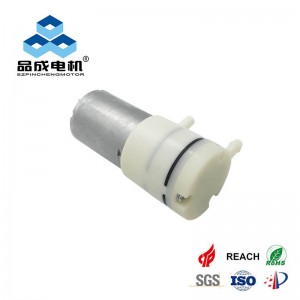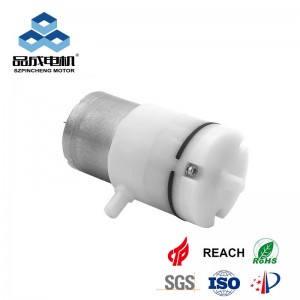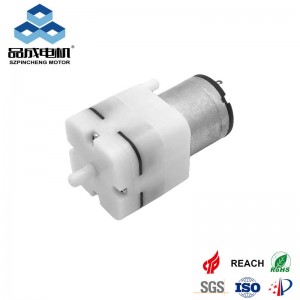Measuring Vacuum Pump Strength: Key Performance Metrics
Vacuum Level Capabilities
The strength of a micro vacuum pump is primarily measured by its maximum vacuum level, typically expressed in negative pressure units. Advanced DC vacuum pump models can achieve vacuum levels up to 29.9 inches of mercury (-99 kPa or -0.99 bar), which represents about 99% of perfect vacuum. This level of performance makes them suitable for applications requiring substantial vacuum force despite their compact size.
Flow Rate Considerations
Alongside vacuum level, flow rate represents another critical strength parameter. Modern 12v vacuum pump units can deliver flow rates ranging from 0.5 to 25 liters per minute, depending on the specific model and design. This combination of decent vacuum level and meaningful flow rate enables these pumps to handle everything from simple sampling tasks to more demanding continuous operation applications.
Factors Influencing Micro Vacuum Pump Performance
Motor Technology and Power Design
The strength of any micro vacuum pump directly relates to its motor design and power utilization. Advanced DC vacuum pump systems incorporate optimized electromagnetic circuits and efficient motor designs that maximize output while minimizing energy consumption. Modern low power vacuum pump designs achieve this through precision engineering and advanced materials that reduce mechanical losses.
Pump Mechanism Efficiency
The internal pumping mechanism significantly impacts overall strength. Diaphragm-based systems provide excellent vacuum capabilities with minimal energy requirements, while rotary vane designs offer higher flow rates at similar vacuum levels. The choice between mechanisms represents a trade-off between ultimate vacuum strength and flow capacity.
Size-to-Performance Optimization
Manufacturers have made remarkable progress in optimizing the strength-to-size ratio of micro vacuum pump units. Through computational fluid dynamics and advanced material science, today's miniature pumps deliver performance that rivaled larger units just a decade ago. This progress enables engineers to incorporate substantial vacuum capabilities into increasingly compact products.
Application-Based Strength Requirements
Medical and Laboratory Applications
In medical devices, the strength of a 12v vacuum pump must meet precise clinical requirements. Suction pumps for surgical applications typically need vacuum levels between 15-25 inches of mercury, while laboratory equipment might require lower levels but higher precision. Modern micro vacuum pump systems meet these diverse needs with remarkable consistency.
Industrial Automation Strength
Industrial applications often demand both strong vacuum levels and reliable continuous operation. Pick-and-place systems, packaging equipment, and manufacturing automation rely on DC vacuum pump units that can maintain consistent vacuum levels through extended production cycles. The strength in these applications combines both vacuum capability and endurance.
Consumer and Commercial Products
Even consumer applications require thoughtful strength considerations. From vacuum food sealers to scientific instruments, each application demands specific vacuum characteristics. The versatility of modern low power vacuum pump designs allows manufacturers to select pumps matched to exact application requirements.
Technical Limitations and Practical Constraints
Physical Size Limitations
While micro vacuum pump technology continues to advance, physical size constraints inevitably impact maximum achievable strength. The laws of physics dictate that smaller pumps have limited displacement volumes, which affects both ultimate vacuum level and flow rate capabilities. Manufacturers work within these constraints through innovative design and precision manufacturing.
Thermal Management Challenges
The strength of a micro vacuum pump must be balanced against thermal considerations. Higher performance typically generates more heat, requiring careful thermal management in compact designs. Advanced 12v vacuum pump units incorporate thermal protection and efficient heat dissipation to maintain performance without compromising reliability.
Power Consumption Balance
Achieving higher strength in a micro vacuum pump generally requires increased power consumption. The art of modern pump design lies in optimizing this balance – delivering maximum performance within acceptable power budgets. This is particularly crucial for battery-operated devices where low power vacuum pump operation is essential.
Performance Enhancement Technologies
Adanced Materials and Sealing
The strength of modern micro vacuum pump systems benefits significantly from material science advancements. High-performance polymers, advanced composites, and precision sealing technologies minimize internal leakage and maximize efficiency. These material improvements directly enhance both vacuum level capabilities and flow rate performance.
Electronic Control Systems
Sophisticated control electronics represent another strength multiplier for DC vacuum pump systems. Precision motor control, real-time monitoring, and adaptive performance algorithms enable these pumps to deliver optimized strength for specific application conditions. Smart control extends both performance capabilities and operational lifespan.
Optimized Fluid Dynamics
Through advanced simulation and testing, manufacturers have dramatically improved the fluid path efficiency in micro vacuum pump designs. Streamlined intake and exhaust paths, optimized valve timing, and reduced internal volumes all contribute to enhanced performance without increasing physical size or power requirements.
Real-World Strength Comparisons
Benchmarking Against Traditional Pumps
When comparing 12v vacuum pump units against traditional larger vacuum systems, the performance gap has narrowed significantly. While industrial-scale pumps still outperform micro pumps in absolute terms, the capabilities of modern miniature pumps satisfy an expanding range of application requirements that previously demanded much larger equipment.
Application-Specific Performance
The true strength of a micro vacuum pump should be evaluated in context of its intended application. A pump generating 20 inches of mercury vacuum might seem limited compared to industrial systems, but when this performance comes in a package smaller than a soda can while drawing less than 2 amps at 12 volts, it represents an engineering marvel perfectly suited for portable medical devices or compact automation equipment.
Future Trends in Micro Vacuum Pump Performance
Continuing Performance Improvements
The strength capabilities of micro vacuum pump systems continue to evolve. Research in piezoelectric actuation, magnetic levitation systems, and alternative pumping principles promises even higher performance in future miniature vacuum systems. These developments will further expand application possibilities while maintaining compact dimensions.
Integration with Smart Systems
Future low power vacuum pump designs will likely incorporate more intelligence and connectivity. Adaptive strength control based on application needs, predictive maintenance capabilities, and system optimization features will enhance both performance and reliability while making these pumps even more versatile.
you like also all
Post time: Oct-08-2025




